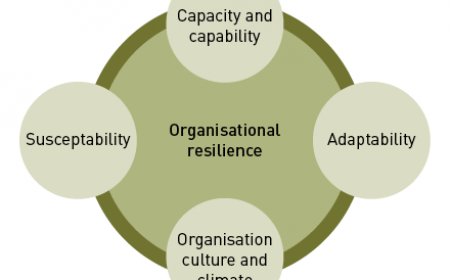Australia Remote Work Guide for 2025
Discover the ultimate guide to remote work in Australia for 2025. Learn how to thrive in a remote work environment with tips on productivity, legal considerations, technological tools, and industry trends tailored for Australians.

The global shift toward remote work has transformed the way Australians approach their professional lives. By 2025, remote work is expected to become a cornerstone of the Australian workforce, driven by advancements in technology, evolving workplace norms, and a growing emphasis on work-life balance. This guide provides a comprehensive roadmap for navigating the remote work landscape in Australia, offering actionable insights and strategies for individuals, businesses, and policymakers.
Introduction: The Rise of Remote Work in Australia
Remote work has transitioned from a temporary solution during the pandemic to a permanent fixture in the modern workplace. In Australia, this shift has been fueled by several factors:
- Technological Advancements : High-speed internet, collaboration tools, and cloud-based platforms have made remote work seamless and efficient.
- Changing Employee Expectations : Australians increasingly value flexibility, autonomy, and the ability to balance personal and professional commitments.
- Cost Savings for Employers : Companies are realizing the financial benefits of reduced office space and overhead costs.
- Government Support : Initiatives promoting digital infrastructure and regional development have encouraged remote work adoption.
By 2025, remote work will no longer be an exception but a standard practice across industries. This guide explores how Australians can thrive in this new era of work, addressing key aspects such as productivity, legal considerations, mental health, and technological tools.
The Benefits of Remote Work for Australians
1. Improved Work-Life Balance
Remote work allows employees to spend more time with family, pursue hobbies, and engage in self-care. For Australians living in urban centers like Sydney and Melbourne, eliminating long commutes can significantly enhance quality of life. Studies show that reducing commute times leads to lower stress levels and increased job satisfaction.
Case Study: Urban vs. Regional Workers
A survey conducted in 2024 revealed that workers in regional areas reported higher levels of happiness compared to their urban counterparts. This trend underscores the potential of remote work to improve overall well-being.
2. Access to Global Opportunities
With remote work, geographical boundaries no longer limit career prospects. Australians can now collaborate with international teams, access global markets, and secure roles with multinational companies without relocating. Platforms like Upwork , Freelancer , and Toptal have opened doors for freelancers and contractors worldwide.
Real-World Example: The Digital Nomad Movement
Cities like Cairns and Byron Bay have become hotspots for digital nomads—remote workers who travel while maintaining their careers. These individuals contribute to local economies and foster cultural exchange.
3. Economic Growth in Regional Areas
Remote work has the potential to decentralize economic activity, bringing jobs and investment to regional towns. This trend supports the Australian government’s goal of reducing overcrowding in major cities and revitalizing rural communities.
Government Initiatives
Programs like the Regional Connectivity Program (RCP) aim to improve internet infrastructure in remote areas, enabling businesses to operate efficiently outside metropolitan hubs.
4. Environmental Impact
Reducing daily commutes lowers carbon emissions, contributing to Australia’s sustainability goals. Remote work aligns with the nation’s commitment to combating climate change. According to a 2023 report, remote work reduced CO2 emissions by approximately 15% nationwide.
Challenges of Remote Work and How to Overcome Them
While remote work offers numerous advantages, it also presents challenges that must be addressed to ensure long-term success.
1. Maintaining Productivity
Working from home can lead to distractions, procrastination, and difficulty staying focused. To combat these issues:
- Create a Dedicated Workspace : Designate a quiet, organized area free from interruptions. Invest in ergonomic furniture to reduce physical strain.
- Establish a Routine : Stick to regular working hours and take scheduled breaks. Use techniques like the Pomodoro Method to maintain focus.
- Use Productivity Tools : Leverage apps like Trello, Asana, or Notion to manage tasks effectively. Time-tracking software such as Clockify helps monitor progress.
Expert Tip: Structured Schedules
Experts recommend starting each day with a "power hour"—a dedicated block of uninterrupted work—to build momentum.
2. Combating Isolation
Social isolation is a common concern for remote workers. Strategies to stay connected include:
- Virtual Team Meetings : Schedule regular check-ins via video conferencing platforms like Zoom or Microsoft Teams. Incorporate informal chats to mimic watercooler conversations.
- Networking Events : Participate in online industry forums and webinars. Organizations like Meetup host virtual gatherings tailored to specific interests.
- Co-Working Spaces : Join local co-working hubs to interact with other professionals. Spaces like WeWork and Hub Australia offer networking opportunities and amenities.
Mental Health Considerations
Loneliness can negatively impact mental health. Encourage open discussions about emotional well-being and provide access to counseling services.
3. Balancing Work and Personal Life
The lack of physical separation between work and home can blur boundaries. Tips for maintaining balance include:
- Set Clear Boundaries : Communicate your availability to colleagues and family members. Use status indicators on communication platforms to signal when you're offline.
- Log Off After Hours : Avoid checking emails or completing tasks outside designated work hours. Implement "no screen" policies during evenings and weekends.
- Practice Mindfulness : Incorporate meditation or exercise into your daily routine to reduce stress. Apps like Headspace and Calm offer guided sessions.
Family-Friendly Solutions
For parents juggling childcare responsibilities, flexible schedules and shared calendars help coordinate work and family duties.
Legal and Regulatory Considerations for Remote Work
As remote work becomes mainstream, understanding the legal framework is essential for both employers and employees.
1. Employment Contracts
Employers must update employment contracts to reflect remote work arrangements, including clauses on:
- Work Hours and Availability : Specify core working hours and expectations for responsiveness.
- Equipment Provision (e.g., laptops, monitors) : Outline responsibilities for supplying and maintaining equipment.
- Data Security Protocols : Include guidelines for handling sensitive information remotely.
Best Practices for Drafting Contracts
Consult legal experts to ensure compliance with Fair Work Act regulations and avoid disputes over terms.
2. Tax Implications
Remote work may affect tax obligations, especially for individuals working across state lines or internationally. Key considerations include:
- State-Based Payroll Taxes : Different states in Australia may impose varying payroll taxes. Employers should consult tax advisors to navigate complexities.
- International Tax Laws : Employees working for overseas companies should seek guidance to avoid double taxation. Treaties between Australia and other countries often address these scenarios.
Tax Deductions for Remote Workers
Eligible expenses such as home office setup costs, internet bills, and utilities may qualify for deductions. Keep detailed records to substantiate claims.
3. Health and Safety Obligations
Employers are responsible for ensuring safe working conditions, even in remote settings. This includes:
- Ergonomic Assessments : Providing guidance on setting up ergonomic home offices. Tools like adjustable desks and supportive chairs prevent injuries.
- Mental Health Support : Offering access to counseling services or wellness programs. Partner with organizations like Beyond Blue to promote mental resilience.
Risk Management Plans
Develop protocols for reporting accidents or hazards in remote environments. Regular audits ensure compliance with safety standards.
4. Data Privacy and Cybersecurity
With sensitive information being accessed remotely, robust cybersecurity measures are critical. Recommendations include:
- Two-Factor Authentication : Enhance account security with multi-layered protection.
- Regular Software Updates : Ensure all devices have the latest security patches.
- Employee Training : Educate staff on recognizing phishing attempts and safeguarding data.
Incident Response Plans
Prepare contingency plans for data breaches or cyberattacks. Assign roles and responsibilities to mitigate risks promptly.
Top Industries Embracing Remote Work in Australia
1. Information Technology (IT)
The IT sector has been at the forefront of remote work adoption. Roles such as software developers, cybersecurity analysts, and IT support specialists can easily transition to remote environments. Cloud computing and automation further streamline operations.
Emerging Trends in IT
Artificial intelligence (AI) and machine learning (ML) are reshaping IT workflows, enabling predictive analytics and enhanced decision-making.
2. Marketing and Creative Services
Digital marketing agencies, graphic designers, and content creators thrive in remote setups due to the availability of collaborative tools like Adobe Creative Cloud and Google Workspace. Virtual brainstorming sessions and client presentations replace traditional meetings.
Content Creation Boom
Platforms like TikTok, Instagram, and YouTube have created demand for remote content creators specializing in video editing, copywriting, and social media management.
3. Education and Training
Online learning platforms and virtual classrooms have revolutionized education. Teachers, trainers, and e-learning specialists play vital roles in delivering remote education. Tools like Zoom , Google Classroom , and Moodle facilitate interactive lessons.
Lifelong Learning Initiatives
Universities and vocational institutions offer online courses catering to diverse demographics, from school leavers to retirees seeking new skills.
4. Healthcare
Telehealth services have expanded rapidly, enabling doctors, therapists, and medical administrators to provide care remotely. Wearable devices and telemedicine apps enhance patient monitoring and diagnostics.
Future of Telehealth
Integration with AI-powered chatbots and virtual reality (VR) consultations promises greater accessibility and efficiency.
5. Finance and Accounting
Professionals in finance and accounting leverage tools like QuickBooks and Xero to perform tasks efficiently from home. Automation reduces manual processes, freeing up time for strategic analysis.
Blockchain and Fintech Innovations
Cryptocurrency trading, blockchain auditing, and fintech startups are driving growth in remote financial services.
Technological Tools for Successful Remote Work
Technology is the backbone of remote work. Below are some of the most effective tools for enhancing productivity and collaboration.
1. Communication Platforms
- Zoom : Ideal for video conferencing and virtual meetings.
- Slack : Facilitates real-time messaging and file sharing.
- Microsoft Teams : Combines chat, video calls, and document collaboration.
Advanced Features
Many platforms now integrate AI-driven transcription, translation, and sentiment analysis to enhance communication.
2. Project Management Tools
- Trello : Visualizes workflows using boards and cards.
- Asana : Tracks project timelines and assigns tasks.
- Monday.com : Offers customizable dashboards for team management.
Automation Capabilities
Automated reminders, task dependencies, and progress tracking minimize manual effort.
3. Cloud Storage Solutions
- Google Drive : Provides secure storage and easy file sharing.
- Dropbox : Syncs files across devices for seamless access.
- OneDrive : Integrates with Microsoft Office applications.
Version Control
Cloud solutions enable multiple users to edit documents simultaneously without losing previous versions.
4. Time Tracking and Productivity Apps
- RescueTime : Monitors time spent on various activities.
- Clockify : Tracks billable hours and generates reports.
- Focus@Will : Plays music scientifically designed to boost concentration.
Gamification Elements
Some apps incorporate rewards and leaderboards to motivate users.
How to Transition to Remote Work Successfully
For those considering or transitioning to remote work, preparation is key. Follow these steps to ensure a smooth adjustment:
Step 1: Assess Your Skills and Preferences
Identify roles and industries that align with your expertise and interests. Highlight transferable skills such as communication, problem-solving, and adaptability.
Self-Assessment Tools
Use personality tests like Myers-Briggs Type Indicator (MBTI) or StrengthsFinder to identify strengths and preferences.
Step 2: Upgrade Your Digital Literacy
Familiarize yourself with remote work tools and technologies. Take online courses to enhance your proficiency in areas like coding, graphic design, or data analysis.
Certification Programs
Platforms like Coursera, Udemy, and LinkedIn Learning offer certifications recognized by employers.
Step 3: Build a Professional Online Presence
Create or update your LinkedIn profile to showcase your skills and experience. Network with industry professionals and join relevant groups to expand your reach.
Personal Branding Tips
Share thought leadership articles, participate in discussions, and highlight achievements to stand out.
Step 4: Negotiate Remote Work Arrangements
If you’re currently employed, discuss flexible work options with your employer. Present a proposal outlining the benefits of remote work for both parties.
Proposal Template
Include sections on productivity metrics, cost savings, and employee retention to strengthen your case.
Step 5: Maintain a Healthy Routine
Prioritize physical and mental well-being by incorporating exercise, healthy eating, and social interactions into your daily schedule.
Wellness Resources
Apps like MyFitnessPal, Calm, and BetterHelp provide tailored support for fitness, mindfulness, and therapy.
The Role of Employers in Supporting Remote Workers
Employers play a crucial role in fostering a successful remote work culture. Here’s how organizations can support their teams:
1. Provide Necessary Resources
Equip employees with the tools and equipment they need to perform their duties effectively. This includes laptops, ergonomic furniture, and software subscriptions.
Budget Allocation
Allocate funds specifically for remote work infrastructure to demonstrate commitment.
2. Foster Open Communication
Encourage transparent dialogue by holding regular meetings and soliciting feedback. Create channels for employees to voice concerns or share ideas.
Anonymous Feedback Mechanisms
Surveys and suggestion boxes allow shy or introverted employees to express opinions freely.
3. Promote Work-Life Balance
Respect employees’ personal time by discouraging after-hours communication. Offer flexible schedules to accommodate individual preferences.
Flexible Policies
Allow compressed workweeks, part-time arrangements, or job-sharing to cater to diverse needs.
4. Invest in Professional Development
Offer training programs and workshops to help employees upskill and stay competitive in their fields.
Mentorship Programs
Pair junior employees with experienced mentors for guidance and career advice.
5. Recognize Achievements
Celebrate milestones and accomplishments to boost morale and motivation. Public acknowledgment reinforces a sense of belonging and purpose.
Recognition Platforms
Tools like Bonusly and Kudos enable peer-to-peer recognition and reward systems.
Accessibility in Remote Work
Ensuring accessibility is paramount to creating an inclusive remote work environment. Employers should implement the following measures:
- Universal Design Principles : Use accessible fonts, colors, and layouts in digital materials.
- Assistive Technologies : Provide screen readers, speech-to-text software, and other assistive tools for employees with disabilities.
- Flexible Policies : Accommodate diverse needs, such as flexible hours for caregivers or religious observances.
Inclusive Hiring Practices
Advertise roles widely and use unbiased language in job descriptions to attract candidates from underrepresented groups.
How to Implement This Guide
To maximize the effectiveness of this guide, follow these steps:
- Identify Your Goals : Determine whether you’re seeking to improve productivity, enhance team collaboration, or address specific challenges.
- Develop an Action Plan : Break down larger objectives into smaller, actionable tasks.
- Leverage Available Resources : Utilize the tools and strategies outlined in this guide to streamline processes.
- Monitor Progress : Regularly evaluate outcomes and make adjustments as needed.
Continuous Improvement
Stay updated on emerging trends and technologies to remain competitive in the evolving remote work landscape.
Conclusion: Embracing the Future of Work
Remote work is not just a trend; it is the future of employment in Australia and beyond. By embracing flexibility, leveraging technology, and prioritizing employee well-being, Australians can unlock unprecedented opportunities for growth and innovation. Whether you’re an individual seeking greater autonomy or an organization striving to remain competitive, this guide equips you with the knowledge and tools to succeed in the remote work landscape of 2025.
As we move forward, let us harness the power of remote work to create a more equitable, sustainable, and prosperous society. The journey begins today—embrace the possibilities and thrive in this new era of work.
10 FAQ’s with Answers
-
What is remote work?
- Remote work involves performing job duties outside a traditional office environment, often from home or co-working spaces.
-
How do I stay productive while working remotely?
- Establish a routine, minimize distractions, and use productivity tools to stay organized.
-
What industries are best suited for remote work?
- IT, marketing, education, healthcare, and finance are among the top industries embracing remote work.
-
Are there legal requirements for remote work?
- Yes, employers must comply with regulations regarding contracts, taxes, health and safety, and data privacy.
-
How can I find remote work opportunities?
- Search job boards like FlexJobs, Remote.co, and LinkedIn for remote-friendly positions.
-
What tools are essential for remote work?
- Communication platforms (e.g., Zoom), project management tools (e.g., Trello), and cloud storage solutions (e.g., Google Drive).
-
How do I negotiate remote work arrangements?
- Present a proposal highlighting the benefits for both you and your employer, emphasizing productivity and cost savings.
-
What are the main challenges of remote work?
- Common challenges include isolation, distractions, and maintaining work-life balance.
-
How can employers support remote workers?
- Provide resources, foster open communication, promote work-life balance, and invest in professional development.
-
Why is accessibility important in remote work?
- Accessibility ensures that all employees, regardless of background or ability, can participate fully and contribute meaningfully.
What's Your Reaction?
 Like
0
Like
0
 Dislike
0
Dislike
0
 Love
0
Love
0
 Funny
0
Funny
0
 Angry
0
Angry
0
 Sad
0
Sad
0
 Wow
0
Wow
0










































